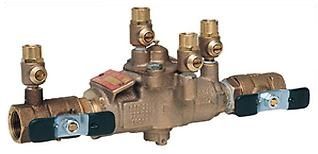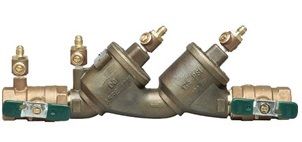About the Cross-Connection Control Program
Do you worry about the quality of your drinking water? Are you aware of the steps that Halton Region has taken to ensure all residents have access to clean, safe drinking water?
Halton Region, in accordance with the Safe Drinking Water Act, introduced The Cross-Connection Control Program (CCCP) to protect the municipal water distribution system and prevent contamination from non-drinking water sources. It is the responsibility of all industrial, commercial and institutional (ICI), and multi-unit residential property owners (under By-law 71-19 the property owner includes occupants and tenants of the property) to do their part to install the proper water backflow prevention devices and have these tested annually by an accredited tester.
As part of this program, Halton Region:
- Identifies cross-connections where potential contamination of drinking water may occur
- Enforces the installation of backflow prevention devices
- Maintains database of locations with backflow prevention devices installed
- Ensures testing of installed devices on an annual basis
- Ensures compliance of the Drinking Water System By-Law 71-19 (PDF file)
Backflow prevention devices
Installed at or near the water meter, backflow prevention devices allow water to flow in only one direction by preventing what is known as backflow. Backflow occurs when a backsiphonage or back pressure condition is created in a water line and causes water to flow in the opposite direction.
Types of accepted backflow prevention devices
RP
Reduced Pressure Principal Assembly (RP)

- Two independently acting check valves separated by a reduced pressure zone
- Installed between two shut off valves
- Each check valve is fitted with a test cock for periodic testing
- Used for health hazards and severely hazardous connections (i.e. hospitals, medical/dental facilities, industrial or chemical plants)
DCVA
Double Check Valve Assembly (DCVA)

- Two internally loaded check valves, force-loaded or internally weighted
- If one check valve fails to close the other will prevent backflow
- Each check valve is fitted with a test cock for periodic testing
- Can be used for all non-health hazard connections (i.e. fire sprinkler, irrigation systems)
Step-by-step process for cross-connection control
Have you received a letter about Halton Region's Cross-Connection Control Program?
- No backflow prevention device
- Administration Fee
$125.04 + HST
- Existing backflow prevention device
- Documents required:
- Completed Survey
- Testing & Inspection Report
- Administration Fee
$62.52 + HST (per device)
Administrative Fee Payment Options:
- Cheque/Money Order – Mail the report(s) and cheque/money order to c/o CCCP Halton Region, 1151 Bronte Road, Oakville, ON L6M 3L1 – payable to Halton Region.
- Credit Card – Email the reports to backflow@halton.ca and ask to pay by Credit Card (American Express not accepted).
- E-Transfer – Email the reports to backflowpayments@halton.ca and set up the e-transfer through your bank with backflowpayments@halton.ca as the email address.
Frequently asked questions
- Halton Region will advise the type of device required after reviewing the completed survey submitted by the OWWA accredited tester.
- Email us at backflow@halton.ca and provide the contact information for your property manager
- Any connection between the municipal drinking water system and any source of contamination
- Created when a source of pressure, such as a pump, creates pressure greater than the water distribution system
- When water flows in the opposite direction caused by a negative pressure in the water line
- Caused when there is a reduction or stoppage of water pressure because of nearby firefighting, power outages, repairs or breaks in watermains
- Using a backflow prevention device to isolate the main municipal water supply and prevent drinking water contamination caused by backflow, backpressure, or backsiphonage
- Multi-unit residential (properties with two or more residential dwellings, not including secondary suites)
- Industrial, commercial, and institutional buildings
- Installed at entrances to buildings for new sprinkler services and on customer's side of the water meter for domestic services
- In order to comply with Halton Region’s Drinking Water System By-law 71-19 (By-law 71-19), it is the responsibility of the Property Owner (under the By-law, the owner includes occupants and tenants of the property) to install the appropriate Backflow Prevention Device on their internal water supply. To manage this potential hazard to our municipal water system, you are required to install a Double Check Valve Assembly (DCVA) Backflow Prevention Device.
- Moderate hazard - any minor hazard connection with low probability of becoming a severe hazard
- High or severe hazard - any type of Cross-Connection involving substances considered dangerous to health